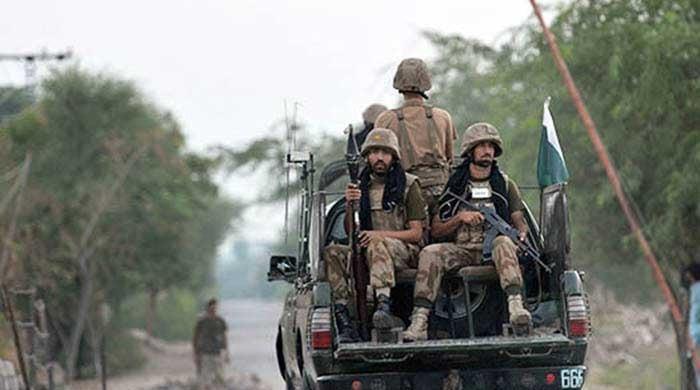Last week, South Asia angry on the edge of disaster as India and Pakistan engaged for four days with intense air strikes and repeated fears of a nuclear showdown between these long -standing rivals.
This most serious escalation since the war in 1971 received the urgent international act. On May 10, an American ceasefire withdrew both nations from the brim and averted what could have been a devastating conflict. A study in science in 2019 warned that a nuclear exchange between India and Pakistan could kill millions and trigger global climate disorders. The fragility of this ceasefire damaged by mutual accusations, incorrect information and deeply sitting mistrust casts a shadow over the region’s stability.
The crisis began on April 22, 2025, when a terrorist attack in Pahaldam, occupied Kashmir, claimed the lives of dozens of tourists. India, which attributes the attack to Pakistan-based militants, launched Operation Sindoor on May 7. Rafale Jets bombarded goals inside Pakistan, where Indian officials claimed surgical precision against terrorist infrastructure. However, Pakistan presented another tale that showcased bombed villages and claimed civilian deaths. The situation escalated further on May 9 when Indian media mistakenly reported that the Indian navy had wiped out Karachi Port and other Pakistani cities – later claims debunked, but as inflamed nationalist feelings and eroded India’s credibility abroad.
Incorrect information proved to be a potent weapon in this conflict that reinforces tension and complicates the de-scaling efforts. The fabricated reports of naval strikes on Karachi exemplify how uncontrolled tales can lead to public opinion and press governments to hardline attitudes. In an era where social media reinforces untruths, such distortions risk transforming skirting to full scale. All of this only brings home the need for verifiable communication to counter the chaos sown by fake news.
The United States stepped in as a critical broker when the conflict was spiraling. The most alarming escalation of the conflict came with India’s strike at Pakistan’s Nur Khan — Flybase in Rawalpindi – only 10 kilometers from Islamabad and near the Pakistani military headquarters. Within a few hours, Pakistan launched a large -scale counter -offensive.
According to the Pakistani military, the 26 Indian military installations that were allegedly involved in strikes against Pakistani civilians and infrastructure targeted. These included the Air Force and Army Facilities in Suratgarh, Sirsa, Adampur, Bhuj, Naliya, Bathinda, Barnala, Harwara, Avantipur, Srinagar, Jammu, Mamoon, Ambala, Outhadia and Pathansmot. Pakistan has claimed to have caused significant damage.
After the escalation, Trump hesitated the administration – originally intervening – course in the midst of rising fears of nuclear conflict. Negotiations culminated with a cessation of hostilities, marked a diplomatic breakthrough and highlighted America’s ability to abuse a threatening crisis.
While Pakistan publicly praised US endeavors, India lost Washington’s role. According to CNN, President Donald Trump announced the ceasefire on May 10 via Truth Social, which credited American diplomacy to stop the violence and express hope of a long-term decision, especially about the Kashmir issue. In particular, the ceasefire was unconditional and the Indus Waters Treaty remains suspended.
Despite this breakthrough, the ceasefire remains exciting. Within a few hours after the agreement, India’s Foreign Secretary Vikram accused Misri Pakistan of the drone penetration and peeling along LOC – accusing Pakistan severely denied. These accusations of tit-for-tate highlight the persistent distrust that plagues the connections of India-Pakistan. India’s insistence on treating Kashmir as a bilateral question rooted in the Simla Agreement of 1972, clash with the reality of international involvement, adding another layer of complexity to the peace process. Meanwhile, Pakistan’s dependence on Chinese-delivered J-10 warriors-where over 50 strengthens his Air Force-a in-depth strategic adaptation to Beijing, a dynamic nerving New Delhi.
Former Indian Army Chief General Manoj Naravane, who spoke in Pune on May 12, offered a sober perspective on the conflict. He warned: “War is not romantic. It’s not your Bollywood movie. It’s very serious business … We shouldn’t cheer for it.” Naravane emphasized the deep human toll, especially on civilians caught in the cross -fire. He spoke of children who lasted shooting, their trauma a burden “accomplished generations” and called for diplomacy as “first choice” over military action. His words resonate with the sharp warnings from experts estimating that a nuclear war between these nations could destroy global food supplies for a decade.
The clash clash in 2025 exposed critical military differences. India’s $ 86 billion defense budget exceeds far Pakistan’s $ 10 billion, yet its air defense is outdated, with only 24 percent modernized. Pakistan’s less, but China-backed Arsenal, including the Agile J-10 warriors, exploited these holes and struck Indian bases with precision. India’s delay in military modernization contrasts with its ambitions as a regional power, while Pakistan’s dependence on China is at risk of tangling it in broader geopolitical rivals. Both nations nuclear capabilities indoor with over 160 war heads and Pakistan with a similar Arsenal amplifier efforts, making DE-Escaling an urgent priority.
In order for the ceasefire to endure, India and Pakistan must move beyond temporary ceasefire. Review of trade, stopped since 2019, could build economic ties that discourage hostility. Bilateral conversations that are potentially relieved by the United States are important for tackling Kashmir and security concerns. International players, including China, signaling restraint through its Global Times editorial, could strengthen stability. Without such steps, the US peace risk collapses and rule with a conflict with disastrous potential.
The crisis of India-Pakistan in May 2025 is a timely reminder of South Asia’s volatility. The US intervention averted immediate disaster, but the region’s peace hangs by a thread, threatened with incorrect information, military brinkmanship and unresolved complaints.
When General Naravane warned, War offers no romance – only suffering and loss. Persistent diplomacy based on truth and mutual interest is the only way to prevent a return to the abyss. In a world where false news can ignite wars, both nations must prioritize restraint and dialogue to ensure a future free from the wiping out.
The author is former head of Citigroup’s new markets Investments and author of ‘The Gathering Storm’.
Disclaimer: The views expressed in this piece are the author’s own and does not necessarily reflect Pakinomist.tv’s editorial policy.
Originally published in the news



